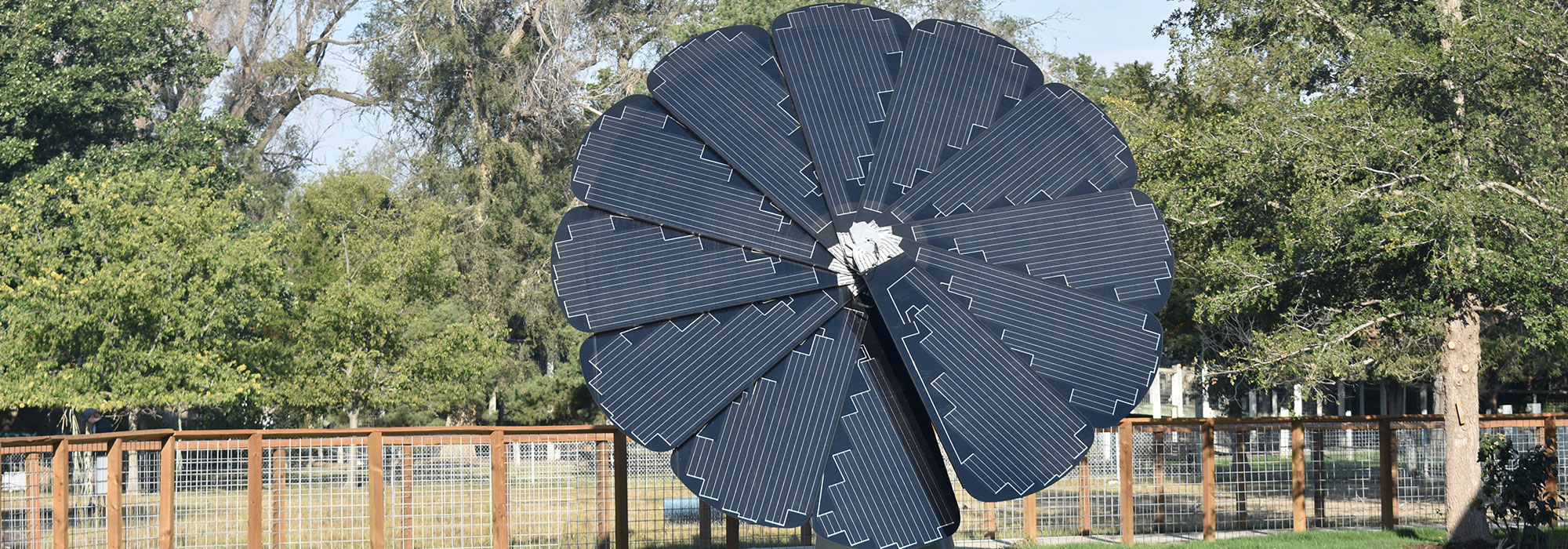Can a SmartFlower Installed at a Kansas Zoo Help Primates in Madagascar?
Oct 08, 2020A SmartFlower can now be spotted at the Lee Richardson Zoo in Garden City, Kansas, and is the very first in the state! The flower, installed earlier this month, is located directly behind the Primate Forest – Lemurs! exhibit in the zoo and provides power to the primate building. Any excess electricity produced is redirected to the nearby Flamingo Habitat. Primate Forest – Lemurs! and the SmartFlower are now open to the public and act as a visual representation of the strong relationship between renewable energy and wildlife conservation.
One of Lee Richardson Zoo’s main goals is to connect their visitors with wildlife and to inspire an appreciation and understanding of the natural world through conservation, education, and engagement. With climate change threatening 40% of the world’s primate population through extreme weather events, the zoo needs to educate its visitors on the links between climate change and habitat loss. That is why they are creating education and conservation programs that feature the SmartFlower. One upcoming program, titled ‘Story Time’, involves reading children’s books to families at the zoo by the SmartFlower, and will include a take-home activity focused on renewable energy for families to do when they get home.
“We wanted something that would be a central component of our conservation message and could also be easily viewed by our guests. Our goal is to provide our guests with knowledge about renewable energy and wildlife conservation. This way, they can make sound decisions about mitigating climate change,” said Max Lakes, the Deputy Director of the Lee Richardson Zoo.

With Primate Forest – Lemurs! being a new exhibit and the central hub of the zoo, the SmartFlower gets ample visitors every single day. An interpretive graphic and power production meter accompanies the solar system, allowing for visitors to understand how the SmartFlower operates and see its energy production statistics in real-time. The zoo is currently designing a survey on the SmartFlower to gather more data about its public impact. They also plan to engage its followers on social media with future posts on the impact of the SmartFlower and their other new habitats.
“When our visitors learn that our SmartFlower follows the sun, they like to look at the unit and come back in a few hours to observe how the position of the panels has changed. It’s an eye-opening experience for them, noticing that difference,” said Keo Bounpaseuth, the Electrical Engineering/SCADA Specialist with the Garden City Public Utilities.
Planting the very first SmartFlower in Kansas at Lee Richardson Zoo started with a simple idea: pairing the new zoo habitats with a renewable energy project. The zoo was initially unsure what the direction of the project would be until Mike Muirhead, Director of Public Utilities in Garden City, introduced the SmartFlower to them. The rest of the project came together after that.
“As a member of the Association of Zoos and Aquarium, we have a Green Committee that meets to work on making the zoo as sustainable as possible. Renewable energy is central in helping save wild habitat and allow animals a place to live. We hope our SmartFlower inspires people to think about the global impacts of climate change on wildlife and act to mitigate it. We are very excited about all the ways we can capitalize on how amazing the SmartFlower is and can’t wait to show everyone our new source of solar power,” said Deputy Director Max Lakes.

Learn more about Lee Richardson Zoo and their conservation efforts at leerichardsonzoo.org.
Interested in learning about other SmartFlower installations? Click here.

